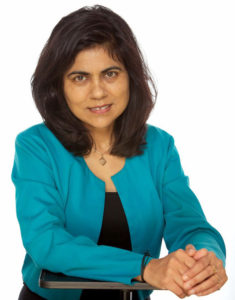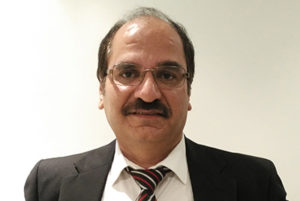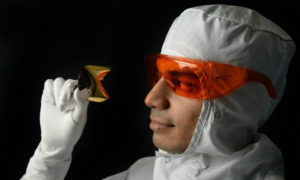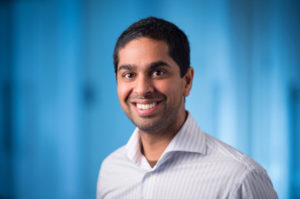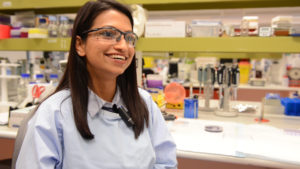Indian scientists make Australia an innovative country
Dharmica Mistry
By Neena Badhwar
Indian academics, wherever they have settled in the world, have contributed through their innovative work in the fields of science, engineering and research. Quietly, they have transformed the society, at times recognised, working in labs using ingenuous ways and techniques to make life better in the 21st century.
Veena Sahajwalla
Few names come to mind, prominent among them, Professor Veena Sahajwalla who has been focussing on turning waste from plastic and glass using high temperatures.
Dr Anoop Kumar Arya has invented a new type of footing called ”˜Soil Anchor Footing’ which can be used to support steel or concrete columns, walls, light posts, sign posts, electrical substation equipment, pipe support, railway infrastructure, light industrial infrastructure etc.
Dr Arya has filed patent applications in Australia, USA and India for this lightweight footing that requires minimum excavation and soil disposal and is quite economical.
Dr Sharath Sriram, Associate Professor at RMIT, has developed nanoscale electronic memories. His team has demonstrated memory cells, down to the size of a few nanometres that store multiple information states ”“ like a drummer switch, rather than the conventional on/off switch.
Rahul Das is another engineer with his work on immersive asset capture which uses a 360-degree camera to take pictures of an area which then integrates the images and a geo-positional signature to create a database of images that can be located on a map. This allows the users to be immersed in a 360-degree overview of the area even when off site. The system is beneficial for planning and sharing with people on site, in central engineering teams, vendors and contractors.
Dr Dharmica Mistry, Young Women of the Year 2016, is BCAL (Breast Cancer Associated Lipids) Resources chief scientist.
While working in a small start-up company, Dharmica used her own hair as a negative control. She noticed a feature which they had been seeing on hair from women with breast cancer. She just had to go get her breast checked up. Lucky for her as she was given an all clear.
But she put her thinking cap on as she remembered that she put olive oil in her hair every week. So she brought olive oil and smeared her hair in it and then x-rayed it again. “We realised it was the lipid that caused the feature. If it could be seen on hair then it could be found in blood,” she says.
BCAL diagnostics, a company especially created for her, is now completing a 100-patient blind study, to reaffirm its results. “Hopefully, the BCAL blood test can enter the market,” she says.
David Nayagam and his team are working on a bionic eye to help visually-impaired people. The research is supported by a consortium of Bionic Institute, the Centre for Eye Research, Data61 and the universities of Melbourne and UNSW.
Nayagam’s team comprises of people from a range of fields that include ophthalmology, electrical engineering, neuroscience and materials science. The devices being developed are aimed at those with retinitis pigmentosa ”“ a group of inherited disorders that eventually lead to loss of vision and age-related macular degeneration.
Queensland Fresh Scientist ”˜People’s Award’ winner Sohinee Sarkar finds how to disarm the superbugs causing the urinary tract infections that can no longer be treated with antibiotics.
“My research has devised a strategy to stop the superbugs by identifying their essential weapons so they can be blocked and left harmless,” says Dr Sohinee Sarkar, a postdoctoral researcher at the Queensland University of Technology’s Institute of Health and Biomedical Innovation.
“In this way, we can treat the infection without using antibiotics that can create more and more resistant bacteria,” Sohinee says.
The work of these scientists is helping society and has the potential for patents.
Some of the scientists are being supported by bilateral research that is being promoted by both Australia and India.
Four Australian scientists will be travelling to India in 2017 to undertake ground-breaking research at some of India’s leading research institutions.
The researchers will investigate new superconductors for use in experimental fusion power generators, new ways of identifying bacteria developing resistance to antibiotic medications, the way in which black rats spread disease in different parts of India, and the effect of music on the recovery of patients with heart failure.
The Australia-India Strategic Research Fund Fellows have been selected by the Australian Academy of Science from a competitive field of applicants and will receive $88,000 from the Australian Government to undertake their research.
The president of the Australian Academy of Science, Professor Andrew Holmes, says that the fellowships are an important component of Australia’s engagement with global scientific enterprise and serve to strengthen existing ties between researchers in Australia and India, the world’s second-most populous country and an emerging scientific superpower.
Dr Mohammed Shahriar Hossain (University of Wollongong) will investigate with the Institute for Plasma Research superconductors for low-cost fusion power for a sustainable future.
Dr Vicki Thomson (University of Adelaide) will work with the Tata Institute of Fundamental Research to study the disease risk from black rat species in India.
Dr Samia Toukhsati (Austin Health, Vic) will research the effect of relaxing music on the autonomic nervous system in heart failure patients, with Manipal University and Kasturba Medical College and Hospital.
And Dr Mike Williams (CSIRO Land and Water, SA), in association with the Indian Institute of Chemical Technology, will look at identifying antibiotic and antimicrobial resistance in the Moosi River near Hyderabad using chemical and biochemical markers.
The Australia-India Strategic Research Fund is Australia’s largest fund dedicated to bilateral research with any country and is one of India’s largest sources of support for international science. A reciprocal fellowships scheme funded by the Indian Government will support Indian scientists to visit Australia from early 2017.
The youngest in the line-up is 14-year-old Yash Arora who did a study of the deterioration of drinking water quality in the Gold Coast region. Yash Arora is one of the finalists in BHP Billiton Science and Engineering Awards 2016.
Interested in a report on the degradation of water quality in Tasmania’s supply, Yash turned his attention to water quality closer to home. He investigated two water treatment plants and conducted six trials of 14 different places for indicators including pH, dissolved oxygen, turbidity and concentration of iron. His results showed minor deterioration in some parameters, but the overall quality of the water was fit for human consumption.
Yash’s data can help the Gold Coast City Council in planning a system of regular sampling and identifying locations for improving their water distribution system.
Indian minds are sharp and are contributing positively to the country they have adopted. Not just the parents, young children of Indian heritage are equally conspicuous among the lot. Young Yash Arora is a shining testamont.
Short URL: https://indiandownunder.com.au/?p=8445


